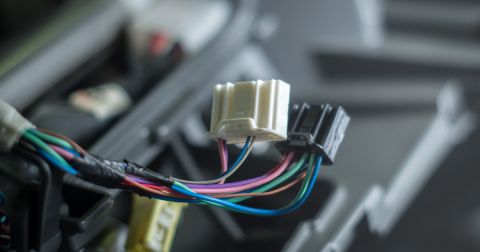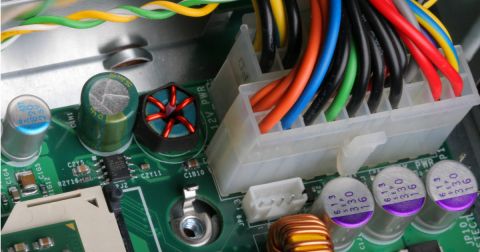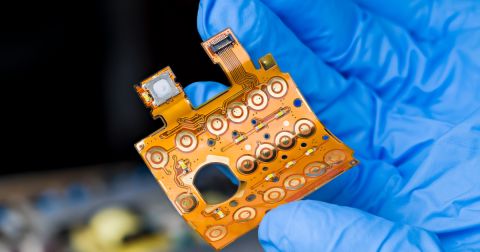Wire Harness Failures: The Hidden Costs and Real-World Recalls That Could Have Been Prevented

Wire harness failures can lead to costly recalls, production delays, and severe safety risks. While many harness failures result in inefficiencies that slowly erode profitability, others escalate into large-scale recalls and legal liabilities. The financial and operational consequences are enormous, but most of these issues can be avoided with the right design and validation tools.
This article explores the hidden costs of poor wire harness design, real-world recalls caused by wire harness failures, and how modern CAD software can prevent these issues before they become costly mistakes.
Manufacturing Bottlenecks and Costly Rework
A leading industrial machinery manufacturer experienced severe production delays when harness designs did not match assembly requirements. Wire lengths were miscalculated, and routing conflicts led to manual adjustments on the shop floor, increasing labor costs and slowing production.
How It Could Have Been Prevented:
- Accurate wire length calculations in CAD software would have ensured correct measurements from the start.
- Comprehensive wiring schematics would have allowed engineers to validate harness routing before manufacturing.
Wire Harness Compliance Failures That Delay Product Launches
A medical device company faced a six-month delay when its product failed an FDA audit due to improper electromagnetic interference (EMI) shielding in the wire harness. The wiring layout caused signal disruptions, making the device unreliable for patient monitoring.
How It Could Have Been Prevented:
- Harness design validation tools in CAD software could have identified potential EMI risks early in the design phase.
- Automated compliance checks would have ensured adherence to industry safety standards before production.
Power Loss and Electrical Failures in Aerospace
An aerospace manufacturer encountered unexpected power failures during final testing. Incorrect conductor sizing and excessive wire lengths caused voltage drops, increasing electrical resistance and heat buildup.
How It Could Have Been Prevented:
- Voltage drop calculations within CAD software could have detected these issues before manufacturing.
- Proper wire sizing and wire length optimization using CAD Software would have ensured the correct conductor specifications from the outset.
Wire Harness Failures That Led to Major Recalls
Even the most advanced industries have faced catastrophic wire harness failures that resulted in large-scale recalls. Here are real-world examples and what could have been done differently.
Automotive Industry: Faulty Harness Assembly Leading to Recalls
The automotive industry has seen major recalls due to wire harness failures, impacting safety and electrical systems. For instance, a major EV manufacturer recalled over 400 vehicles due to transmission wire harnesses routed too close to the driveshaft, causing insulation wear and sudden power loss. Another recall involved 307,000 SUVs with a faulty airbag wiring harness that deactivated front passenger airbags, increasing crash risks. Additionally, 12,000 EVs were recalled due to vibrations damaging the rearview camera harness, leading to image failures, and 1.3 million vehicles were recalled due to faulty coaxial cable connectors in the rearview camera harness. Furthermore, tow hitch wiring defects posed fire hazards, leading to a recall of 570,000 vehicles.
These recalls highlight the severe consequences of harness design flaws, from malfunctioning safety features to complete electrical failures. Implementing better harness routing validation, shielding analysis tools, and automated crimping verification could have prevented these issues before production.
Aerospace Industry: Wiring Defects Leading to Safety Hazards
The aerospace industry has encountered substantial operational hazards due to wiring errors and inadequate harness design. For instance, a wiring mix-up in a Saab 2000 aircraft's propulsion system activated reverse thrust during landing and caused a runway overrun. This incident shows how minor harness miswirings can result in severe safety risks in high-stakes environments like aviation.
Aircraft wiring system failures frequently arise from mislabeling, improper routing, or inadequate insulation, causing signal interference, power failures, or incorrect system responses. Automated wire labeling, pre-assembly electrical validation, and functional safety testing could have prevented these issues by ensuring proper harness integrity before deployment.
Industrial & Commercial Trucking: Wire Harness Failures Causing Downtime and Operational Losses
Wire harness defects have caused severe operational disruptions in the industrial and commercial vehicle sectors. A major investigation into 313,000 commercial trucks revealed that engine wiring harnesses were improperly routed, leading to diagnostic failures and sudden engine shutdowns. Similarly, thousands of industrial machines were recalled due to overheating harnesses, which caused short circuits, unexpected shutdowns, and fire risks. These harness failures resulted in factory downtime, production losses, and operator safety concerns.
In heavy-duty industries, harness durability is essential for preventing costly disruptions. These failures could have been mitigated through wire insulation protection, predictive maintenance using IoT-enabled harness monitoring, and automated electrical testing to detect harness vulnerabilities before they caused failures in the field.
Preventing Wire Harness Failures with Smarter Design and Testing
Wire harness failures can result in significant hidden costs. This includes production delays, safety issues, and expensive recalls, which can disrupt operations, compromise safety, and damage reputations across various industries. These issues could be avoided through rigorous design validation, quality assurance, and proactive maintenance.
Manufacturers should implement comprehensive design validation using CAD software to mitigate these risks. This will allow stress testing, voltage drop calculations, and EMI shielding verification before production. Additionally, automated functional testing and inspections during manufacturing can catch errors early. IoT-enabled harness monitoring can further improve reliability by detecting wear and tear in real time, preventing unexpected wire harness failures.
By prioritizing advanced design processes and validation tools, companies can minimize costly recalls, improve product reliability, enhance overall safety, and ensure that wire harnesses are the most secure and efficient part of their systems.
Want to seamlessly design wiring for your harness? Experience the power of wire harness design in Altium Develop.











